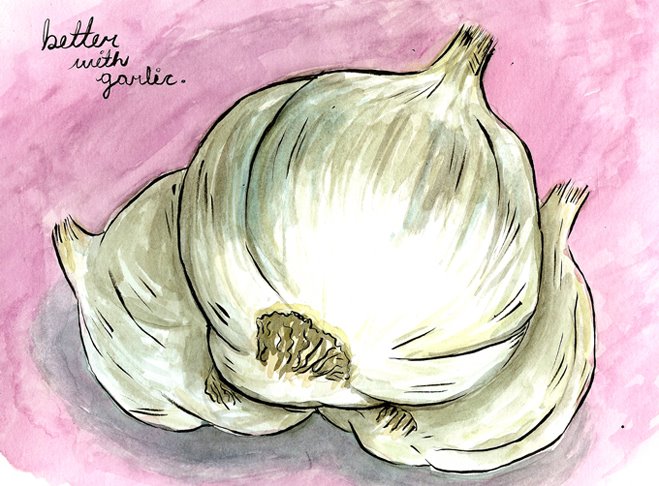I tried a new recipe out of James Beard’s famous book Beard on Bread. I followed it exactly and though my loaves were not as big as I would’ve liked, it tastes wonderful. I do have some serious issues on shaping loaves, but they still taste good, ugly though they are. The reason I followed it exactly is because, with baking, a little change at the beginning can be a big change in the end. With cooking, I go crazy and make things up when I go along, even if I’ve never tried the recipe before (my mom does this too and we drive my dad crazy!). So next time I’ll likely make one big loaf and add a little whole wheat flour.
As for this time, man! I almost threw the whole thing back in the KitchenAid to finish kneading because it was pissing me off. However, I am very stubborn and worked it out by hand. I really do like finishing off my own breads and there’s no victory like that magic moment when stubborn dough becomes soft and satiny and works with you rather than against you. And like I said, it tastes fantastic. Beard’s instructions are very easy to follow and his voice comes through clearly. You kind of feel like he’s in the kitchen with you, helping you work the dough. Although with my efforts last night, he probably would’ve pushed me out of the way and done it himself.
Italian Feather Bread from Beard on Bread:
Makes 2 free-form loaves
2 packages (or 2 scant tablespoons if you buy it in bulk) active dry yeast
1 Tb. granulated sugar
1 c. warm water (100 to 115 degrees, approx.)
1/3 c. butter, cut into small pieces (very small, they need to melt in hot water)
¾ c. hot water
2 tsp. salt
5½ to 6 c. all-purpose flour
Cornmeal
1 egg white, lightly beaten
Stir the yeast, sugar, and warm water together in a large mixing bowl; let sit till yeast dissolves and starts to proof. In the meantime, melt the butter in the hot water and let cool to lukewarm. Add the salt, and combine with the yeast mixture.
Stirring vigorously with a wooden spoon, add the flour, 1 cup at a time, until the dough almost comes away from the sides of the bowl. (He adds: don’t be afraid if it seems rather soft and sticky; it will stabilize in the next step.)

Turn out the dough onto a lightly floured board. Using a baker’s scraper or a large spatula, scrape under the flour and dough, fold the dough over, and press it with your free hand. Continue until the dough has absorbed enough flour from the board and becomes easy to handle. Knead for 2 to 4 minutes, being sure to keep your hands well floured, because it is still a sticky dough.
When the dough is soft and smooth, let rest for 5 or 6 minutes and then divide into two. Roll each half into a rectangle about 12” long and 8” wide. Starting from the wide end, roll this up quite tightly, pinching the seams as you roll.
Butter (or grease with oil) one or two baking sheets well (I used one) and sprinkle with cornmeal. Place the loaves on the sheets, and let them rise in a warm, draft-free place until doubled in bulk, about 50 to 60 minutes.

Brush with beaten egg white and bake in a preheated 425 degree oven 40 minutes, or until the loaves are a rich, golden color and make a hollow sound when you tap the crust, top and bottom, with your knuckles. Cool on a rack and slice when quite fresh.

It’s delicious warm, which is my favorite way to eat homemade bread, and goes well with meats and fruits.
.jpg)




1 comment:
I've made this loaf a few times now and absolutely love it! I recently lent out my Beard on Bread book and so am very appreciative to find the recipe online here on your website. Thank you. You mentioned that you were unhappy with your loaf formation. It looks like your loafs are a bit dry. You might have better luck forming these loafs if you keep them more moist - almost sticky even. The flour/water ratios can be a bit misleading since we all are baking in different temperatures and humidities. I have even used less than 5 cups of flour in this recipe because it was so dry where I was and my dough was in turn so dry! I found that with a bit moister dough in this recipe is really fun to work with and forms absolutely beautiful braided or rolled loaves.
Thanks for your blog!
Post a Comment